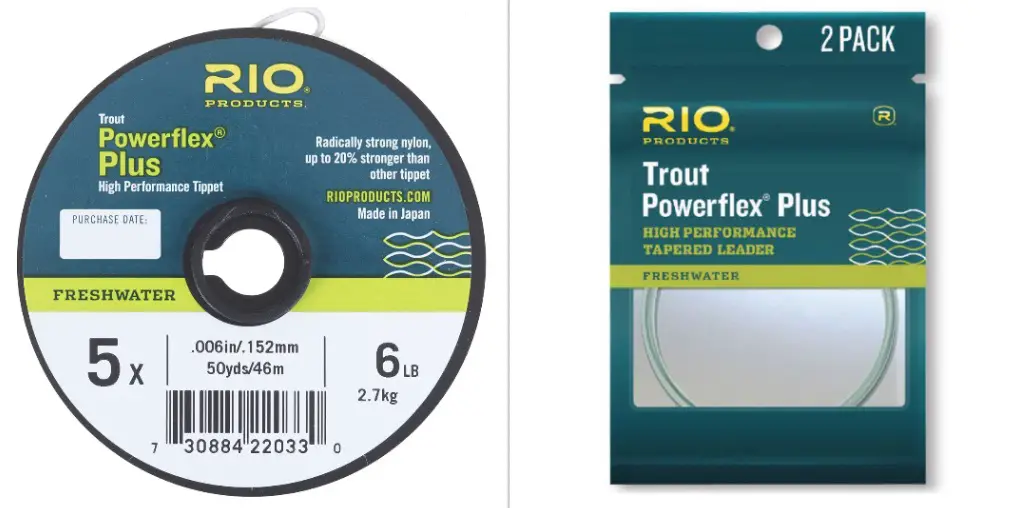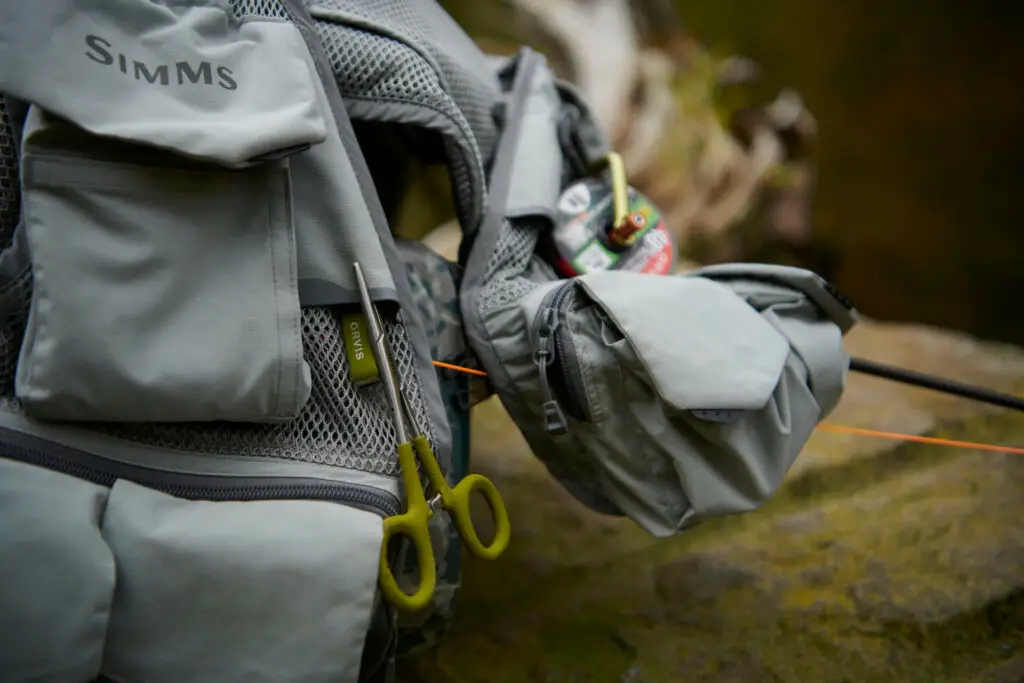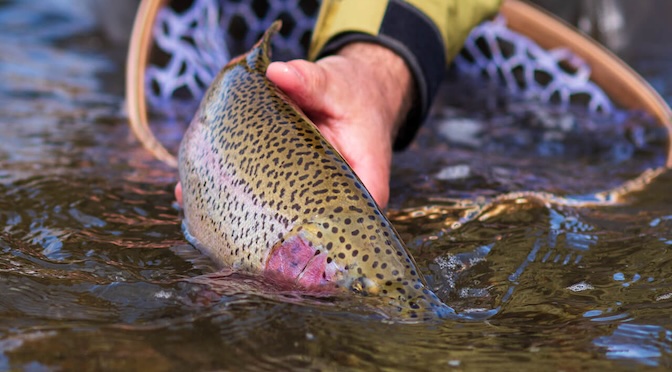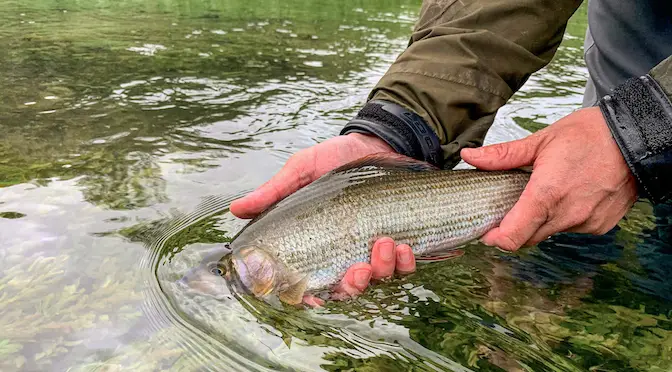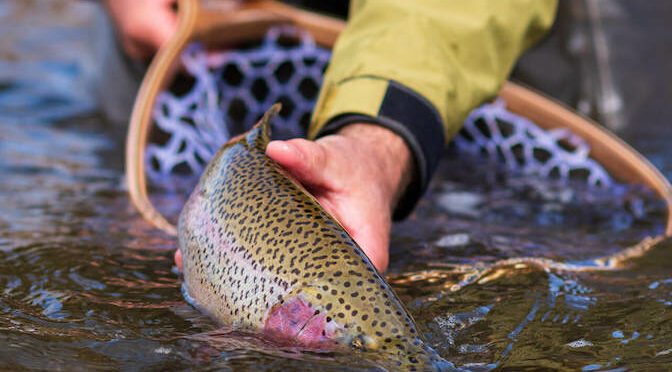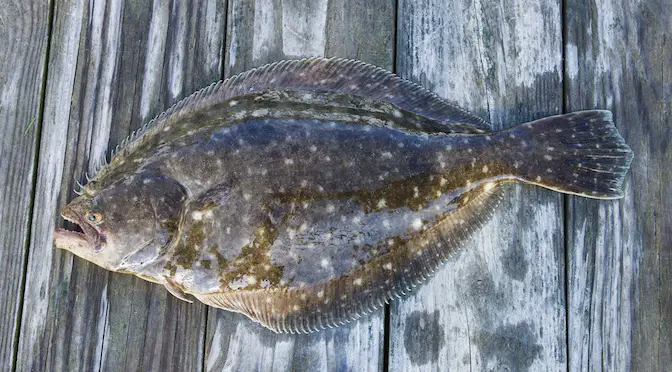Last updated on December 5th, 2023.
- Generational Divide - September 13, 2022
- Mousing for Trout at Night - September 6, 2022
- Best Fly Rod Roof Rack – Top 7 of 2024 – Buyer’s Guide - July 4, 2022
Choosing the right fly fishing tippet can be tricky. We tell you everything you need to know.
Fly fishing can be a complex undertaking when you’re starting out. The terminology often makes it sound like you need to learn a lot before you start to catch fish. In this guide we want to tell you everything you need to know about the fly fishing tippet. It’s a crucial part of your setup that can make the difference in having success at the water.
Understanding Fly Fishing Tippets
No matter if you’re an advanced angler or a beginner, understanding tippets and leaders is essential when fly fishing. We want to give you a little more insights into when to use which setup.
Your gear always consists of a rod, a reel, a line and a fly. In order to connect your fly to your line you need a tippet and/or a leader.
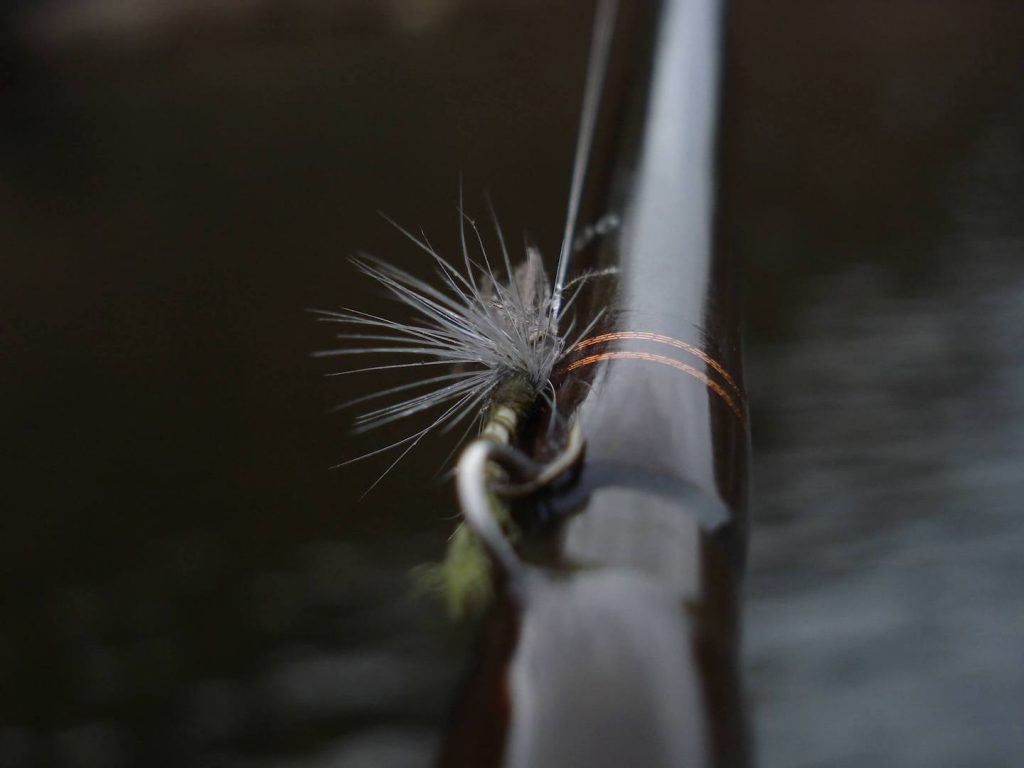
Tippet vs. Leader
Often people get confused when it comes to tippet vs leader. Leaders and tippets form the connection between your line and your fly. A leader is usually tapered. That means it has a bigger diameter on the end where it connects to your line and a thinner one where it connects to your fly.
You can either use a tapered leader out of the box. The other option is to create your own tapered leader by connecting pieces of tippets of different diameters. The connection can be made with a blood knot that ensures the necessary stability. As a rule of thumb a leader typically has a length of 9 feet.
A tippet is typically the thinnest part of your setup. The thinner the tippet the less visible it is for the fish. On the other hand you always have to choose a diameter strong enough to handle the species you are after.
You can either attach a piece of tippet to a leader using a tippet ring. This enables you to cover different situations with the same leader by just exchanging the tippet. If you are fishing with a streamer you can also attach the tippet directly to your line.
Why you Should Use a Fly Fishing Tippet
Leaders and tippets come in a variety of shapes, materials, sizes and colors. Their common goal is to provide an invisible transition from your fly line to your fly. Not only do they enable you to catch fish, they are also a crucial part in the transition of power in your cast.
A correct setup of your leader and/or tippet ensures that your cast rolls over neatly and that your fly lands on the water as it should. If your tippet is to thin for example, you won’t be able to cast a heavy streamer.
Materials of Fly Fishing Tippets
Leaders and tippets are usually made of two materials: monofilament (nylon) or fluorocarbon.
Monofilament (often simply referred to as “Mono”) is known to have more stretch than fluorocarbon and floats well on the water. Fluorocarbon is said to be less visible for fish and more durable. Fluorocarbon is more expensive than mono. In the end it really comes down to personal taste. In 99% of fishing situations you will do equally well with one or the other.
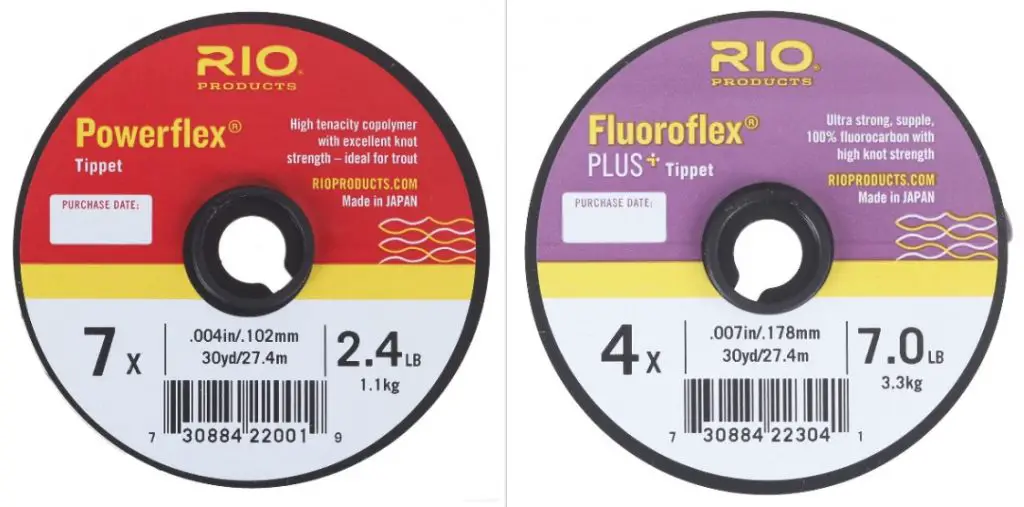
Generally speaking, fluorocarbon sinks faster and has a higher abrasion resistance. Hence many fishermen prefer it for nymphing or when fishing streamers. Monofilament floats better and is hence often the material of choice for dryfly fishing.
Diameters of Fly Fishing Tippets – the X-System
Instead of a diameter on the tippet spool, you will often find a combination of a number and X, for example 5X. The smaller the number, the thicker the tippet. Thicker tippets are used for heavier flies and to target bigger fish.
Thinner tippets have the advantage of giving your fly a more natural movement. They are often also a weapon of choice when casting to large fish that scare easily.
Here is an overview of tippet sizes:
1x-3x: The right choice for bigger fish like bass or large trout. They make sure you can handle the power of such fish and also ensure you can cast bigger streamers.
4x-6x: The right choice for smaller flies to cast to smaller fish. Often used when dry fly fishing or nymphing. 5x for example is a typical fly fishing tipet used for dry fly fishing for trout.
FAQs
What is the purpose of a tippet in fly fishing?
The tippet is the final section of monofilament or fluorocarbon line attached to the leader. Its primary purpose is to connect the leader to the fly, providing a finer and more invisible section for presentation while maintaining the strength required to handle the fish.
How do I choose the right tippet size for my fly fishing setup?
Tippet size is determined by the diameter, commonly measured in “X.” Choose a tippet size that matches or is slightly smaller than the diameter of your leader. For example, if you have a 4X leader, use 4X or 5X tippet for a smooth transition.
Is fluorocarbon or monofilament tippet better for fly fishing?
Both fluorocarbon and monofilament have their advantages. Fluorocarbon is more invisible underwater, sinks faster, and is abrasion-resistant. Monofilament tends to be more supple and may float better. The choice depends on the fishing conditions and personal preferences.
How often should I replace my tippet?
Regularly inspect your tippet for signs of wear, such as nicks, abrasions, or weakening. Replace the tippet if you notice any damage or after catching several fish. Frequent checks and replacements ensure the integrity of your setup and increase your chances of landing fish successfully.
Disclaimer: If you click on one of the links and end up purchasing a product we earn a small commission at no extra cost for you. We only recommend high quality products we use ourselves. Thank you!

